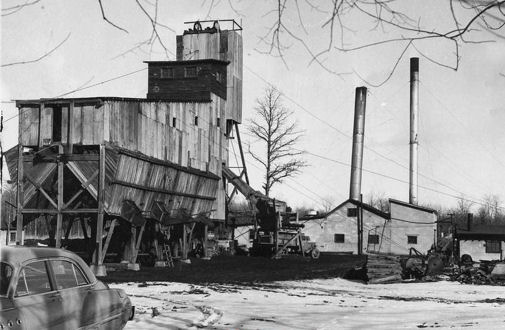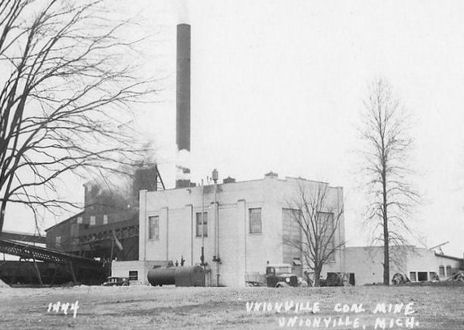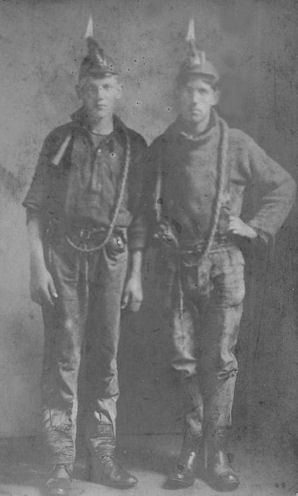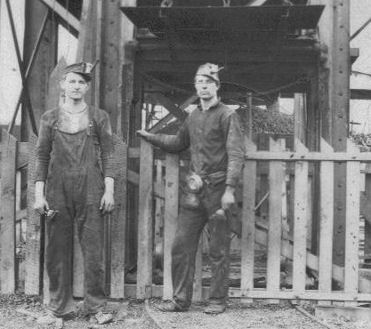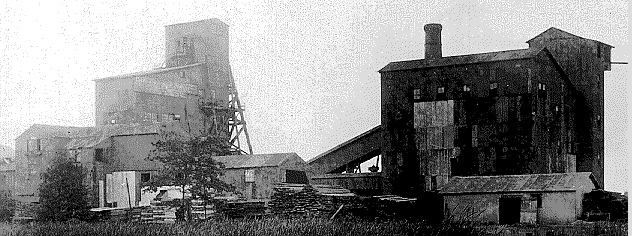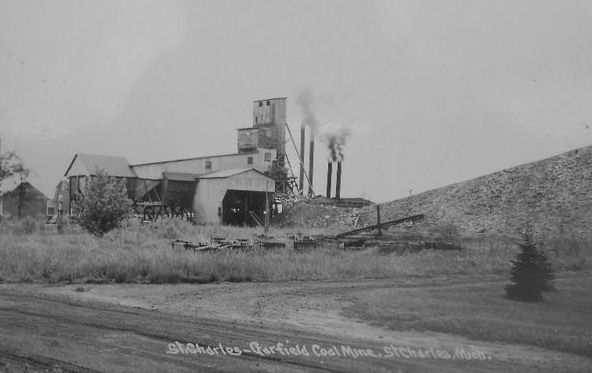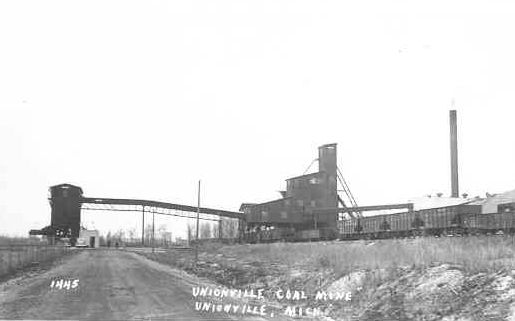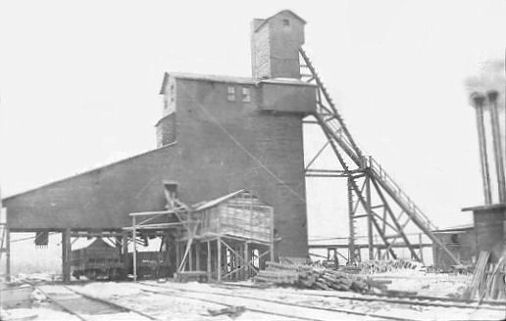Coal was first discovered in Michigan around 1835 as pioneers built a grist mill west of Jackson. In 1837, Michigan’s first geologist, Douglass Houghton, who investigated the coal deposits, reported: "In the bed and bank of the (Grand) River...at Jacksonburgh, the sandstone is seen to embrace a bed of bituminous shale...intermixed with very thin layers of coal." Much of the coal existed in outcrops, which made excavation easy. In 1840 settlers extracted 1,500 bushels of coal for local use. But because there were few steam powered engines or large institutions to provide the markets essential for the commercial development of coal mining, it would be almost 20 years before their needs spurred the commercial mining of coal.
The Michigan Coal Basin is the only coal field in the St. Lawrence drainage basin. It covers an area of about 11,000 square miles almost in the center of the Lower Peninsula, extending from the central part of Tuscola County on the east to the western part of Newaygo County on the west and from the south central part of Roscommon and Ogemaw counties on the north to the central portion of Jackson County on the south. The Michigan Coal Basin is divided into five sub-fields; the Jackson field, the Cedar Grand field, the Owosso district, the Saginaw district and the Bay field. The seams vary in thickness, but the major coal-producing strata are approximately 1 m thick. The largest deposits found (and the most coal mined in the past) were in the Saginaw Valley. Most of the mining activity was concentrated in Bay, Saginaw, Tuscola and Genesee Counties. The height of production was 2 million tons in 1907, but many mining operations had stopped by 1930, with some small scale open pit mining operations continuing until 1952 near Williamston The last deep coal mine in Michigan closed in 1952. However, at one time more than 160 coal mines once were active in the Michigan Coal Basin.
A number of abandoned coal mines are still evident in the mid-Michigan area. Michigan coal seams are thinner and more difficult to mine than in Appalachia, Wyoming, or other areas, so by the 1960's, Michigan's coal fields were abandoned. Michigan's coal mining's major production period spanned from 1860 to 1949 and produced over 46 million tons of coal. Mining conditions were difficult, because the state's coal deposits are highly variable in thickness and distribution and often drop out suddenly. Mining of Michigan's coal deposits was done mostly through underground shaft mines, with some small open pit operations. All of Michigan's coal is bituminous in rank and averages 1-3 percent sulfur and 3-9 percent ash
Today, over 300 million tons of coal remain beneath the Lower Peninsula. An open-pit mine operated briefly in Ingham County in the mid-1970s, and in the early 1980s mining operations leased thousands of acres of former coal mines in anticipation of strip mining coal left behind by earlier operations. But the drop in coal prices halted production before it began, and thus, current production of coal in Michigan is essentially nil..
Pere Marquette Shaft #2 - Saginaw, MI
Unidentified Michigan coal mine
MICHIGAN COAL MINES
Michigan coal mine mule drivers
Unionville Coal Mine - Unionville, MI
Bliss Coal Co. - Swan Creek, Saginaw, MI
Coal Miners - Saginaw, MI
Robert Gage Coal Company's Mine No. 8 - Saginaw, County, MI
St. Charles-Garfield Coal Mine - St. Charles, MI
Unionville Coal Mine - Unionville, MI
Akron Coal Mine - Akron, MI
